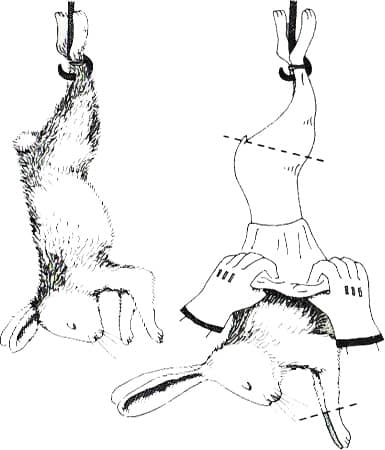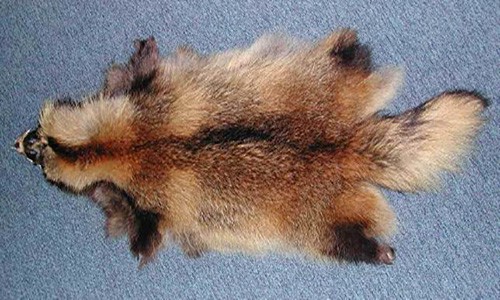Whether you’re trapping furbearers to sell or keeping pelts of the animals you hunt for your own, a blood-stained pelt can be aggravating. Most times, a blood-stained hide will bring in a lower price, but for a good reason.
With that bloodstain, it’s more difficult to determine the quality of the fur, and blood can easily cover up damaged fur. For that reason, it’s automatically assumed that blood-stained fur is damaged fur, regardless of the true quality.
Even if you’re planning on keeping the pelt to tan and use for your own use, that bloodstain can be discouraging enough to make you reconsider using that pelt as a wall hanging or bedspread.
Luckily, even caked-on blood is not a cause to lose hope. You can still clean that pelt up really nice and get that higher price or wall quality hide you were hoping for. Best of all, it doesn’t require any equipment or supplies that most hunters, trappers, or amateur taxidermists don’t already have lying around.
How to Get the Blood Out of Fur Bearing Pelts
Prevention Is Always the Best Medicine

It goes without saying that not having to clean the blood off of a pelt is always best. However, you can take some extra steps to help prevent blood from getting onto the pelt in the first place.
Of course, if you brought in the animal while hunting, it’s almost assured that you will have to clean up some bloodstains. Nonetheless, when it comes time to skinning, these tips will help you to minimize how much cleaning you have to do in the end.
The biggest culprit for bleeding will be when you get to skinning the neck. One trick you can do is tie the neck to keep the blood pinched back to prevent excessive bleeding.
It’s important to remember, though, that most animals will bleed from the nose while you’re skinning them due to hanging upside down. It can be devastating to reach the end and flip the hide right side out only to discover blood all across the fur. An easy fix is to take a few sheets of paper towels and affix them to the muzzle of the animal (you can use duct tape, wire, or string). This will ensure that any bleeding is caught and won’t give you extra work later.
Cleaning Up That Blood

Small amounts of blood can usually be brushed out with a dog brush once the blood has dried. For larger stains, you’ll have to put in a bit more effort.
However, the simplest method is to apply borax to the wet blood. The borax will dry out the blood, and once it is completely dry, you can just brush the dried blood flakes out with a dog brush (as you can see, a dog brush is a really handy tool to have when taking care of hides.)
Another option you have is to wash the blood out with water and a little bit of laundry detergent, dish soap, or even shampoo. A five-gallon bucket will work with smaller hides, while large plastic totes or a clean plastic garbage can will work better for larger hides, such as from deer or wolves.
You’ll have to change out the water at least three or four times to make sure you get all of the soap or detergent out of the hair. Once thoroughly rinsed, squeeze and gently wring out as much water as you can.
Hanging the hide over the back of an old chair or a wooden sawhorse will allow it to drip dry. However, the entire process takes a few hours regardless. Once the hide is dry, the fur will look pretty ratty. This is where that dog brush comes in handy as a good brush will help the fur to bounce back and regain its loft.
Another option that seems utterly counterintuitive, but works well for heavy blood stains and greasy hides such as from beavers, is to wash the hide in your washing machine.
I know what you’re thinking, and believe me, I had the same thoughts and look on my face when I first heard of using a washing machine to clean hides, too. But it works. You don’t need any special detergents; your usual laundry detergent will work fine but depending upon how strong it is, you may want to only use half a cap full.

One cycle should be enough to take out any bloodstains, as well as remove dirt and grime from within the fur. Once it’s done and you’ve let it dry, brush the fur to restore its loft and smooth it out.
As crazy as this method sounds, should you try it, you may find that you like how clean it makes the fur and that that nicer appearance fetches you a higher price or simply makes for a warm hide you wouldn’t mind throwing across your bed.
Ready to Become an Expert of Fur Bearing Pelts?
Whether it’s a little bit of blood or half the pelt is covered in it, you can still have a beautiful hide to sell or keep. And if you are looking to keep that hide and preserve it yourself, be sure to check out the other post on how to tan hides at home.